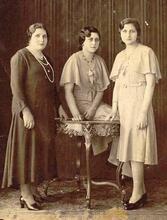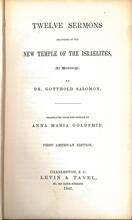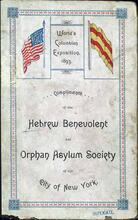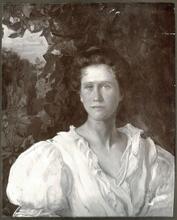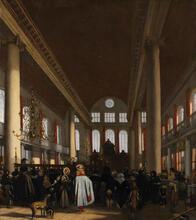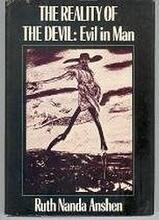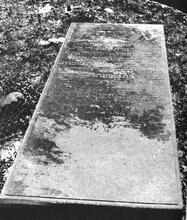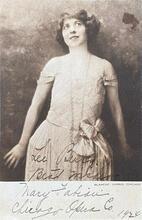Margaret Seligman Lewisohn
Margaret Seligman Lewisohn not only gave generously to education causes, as the head of the Public Education Association she helped make the community as passionate about education as she was. In 1922, she joined the Public Education Association, becoming its professional director in 1941 and chair of its board in 1946. Through the association, she worked with the city’s Board of Education to improve school facilities, teachers, and curricula. From 1930 to 1936 she chaired the activist Women’s City Club education committee, studying the progress of both gifted and special needs students in New York’s public schools. She also chaired the board of the Little Red School House from 1936 to 1940 and worked on the Metropolitan Museum of Art’s education committee from 1936 to 1944.
Margaret Seligman Lewisohn—education advocate, philanthropist, art collector, and college trustee—was born in New York City on February 14, 1895. She was the daughter of Isaac Newton and Greta (Loeb) Seligman. Lewisohn came from a prominent German Jewish family. Her father headed J. & W. Seligman, the bank that served as the fiscal agent for the Union during the Civil War, and her mother’s father founded the firm of Kuhn, Loeb and Company.
Early life: music, education, and marriage
Margaret Lewisohn graduated from Miss Masters School in Dobbs Ferry, New York, in 1912. An aspiring pianist, she attended the Institute of Musical Art (later known as the Juilliard School of Music), earning a degree in 1914. During her two years of conservatory study, Lewisohn also pursued course work at Teachers College of Columbia University, where she was particularly interested in the progressive education ideas of John Dewey and others. Her interest in education was, in part, an outgrowth of her family’s long-standing connection to the Ethical Culture School. At the same time, Lewisohn worked at the Hudson Guild Settlement House, where she also performed as a pianist.
Margaret Lewisohn was married to Sam A. Lewisohn, son of Adolph Lewisohn, benefactor of City College and other major New York cultural institutions, on February 2, 1918. The couple collected major works of art, including a substantial number from the modern period. They resided on East End Avenue in Manhattan and in Harrison, New York.
Public school advocacy and philanthropy
Calling herself “a citizen interested in education,” Lewisohn had a long and illustrious career acting in the interests of public education, including membership in the Public Education Association, which she joined in 1922. In 1941, she became the professional director of the organization, which worked with the city’s board of education to improve the quality of teachers, school facilities, and curricula. From 1946 to her death, she served as the chair of the association’s board of trustees. She often wrote of her views on education, arguing that “the schools will only be as good as we citizens desire them to be.... We must continue to create an aroused public opinion that will demand the best in education and that will be willing to pay for it now.”
In addition to her professional work in education, Lewisohn devoted her time and energy to a number of New York City’s most prominent educational and cultural institutions. From 1930 to 1936, she served as the chair of the Women’s City Club education committee, which devoted its energies to studying the progress of so-called super-normal and sub-normal children in the New York City public schools. She served as chair of the board of trustees of the Little Red School House from 1936 to 1940 and was a member of the Museum of Modern Art’s education committee from 1936 to 1944. From 1939 to 1946, Lewisohn was a trustee of Bennington College, which two of her four daughters attended, and she was a trustee of Vassar College at the time of her death.
A tragic ending
Lewisohn was killed in an automobile accident on New York’s Taconic State Parkway near the small town of Shenandoah on June 14, 1954. She was on her way home from a visit with Adlai Stevenson, the 1952 Democratic presidential candidate, who had presented the commencement address at Vassar. Lewisohn was fifty-nine years old and was survived by four daughters: Marjorie Lewisohn, Mrs. Sidney Simon, Mrs. Julian Eisenstein, and Mrs. Ernest Kahn. Her memorial service at Temple Emanu-El in New York City drew more than five hundred prominent citizens. In her will, she bequeathed major works to the Metropolitan Museum of Art, the Museum of Modern Art, the National Gallery, the Brooklyn Institute of Arts and Sciences, Vassar College, and the Whitney Museum of American Art.
AJYB 56:570.
EJ; Obituary. NYTimes, June 15, 1954, 1:7.
WWIAJ (1938).
WWWIA 3.

